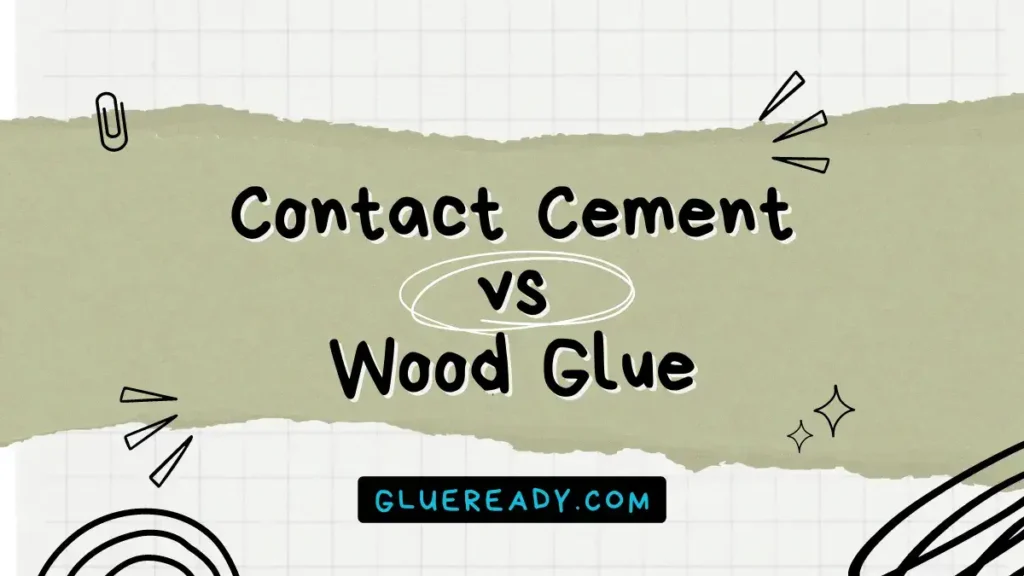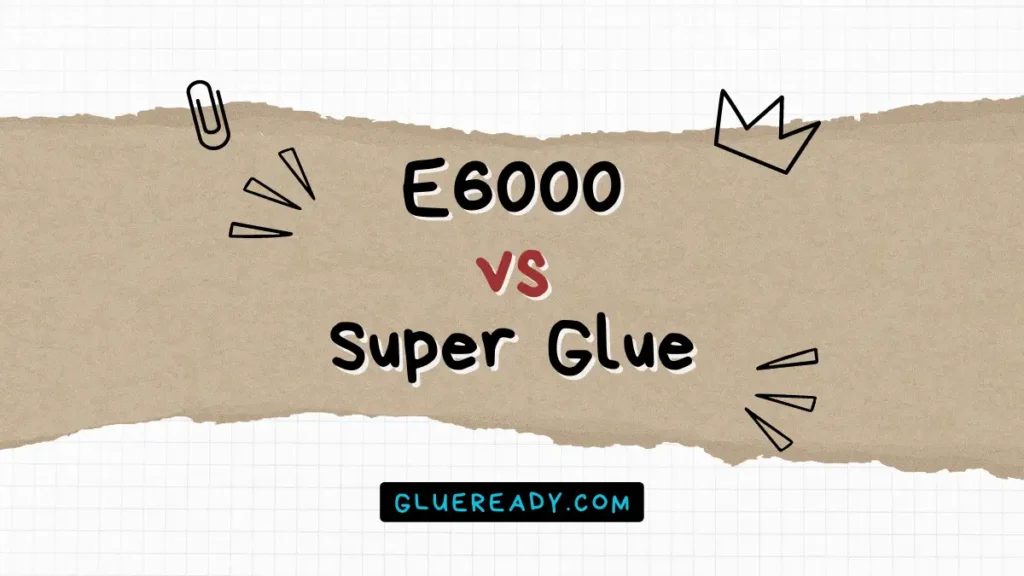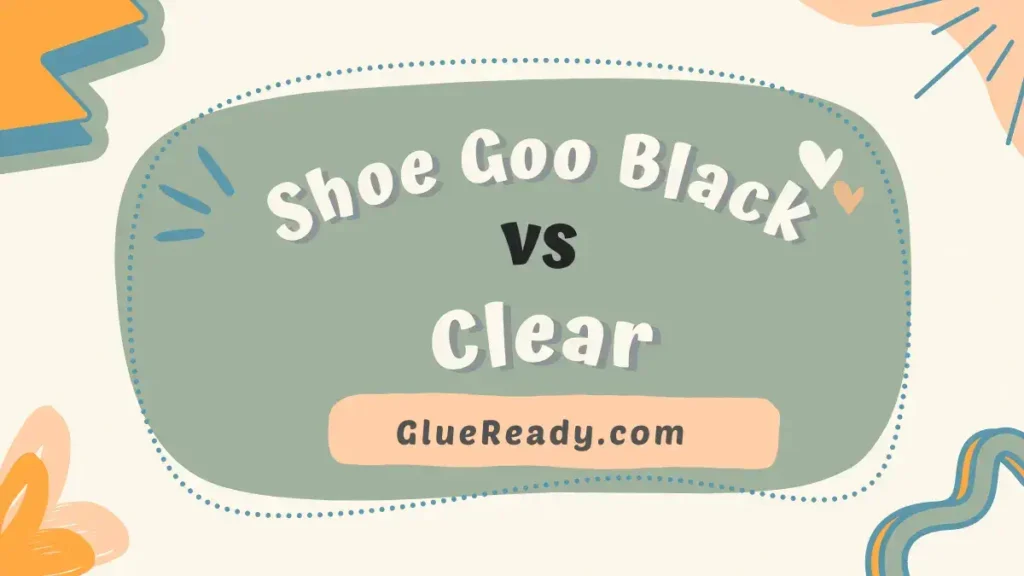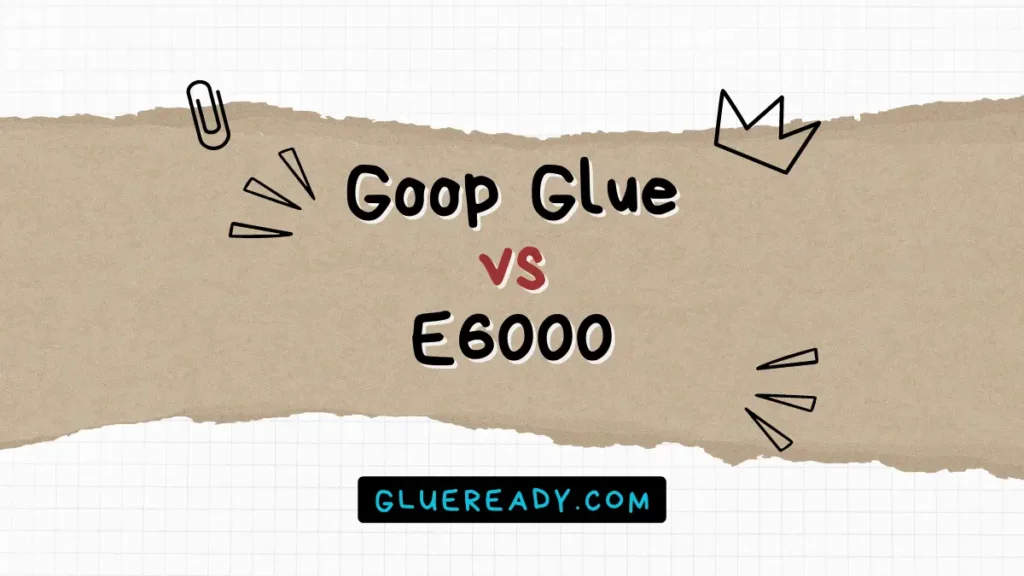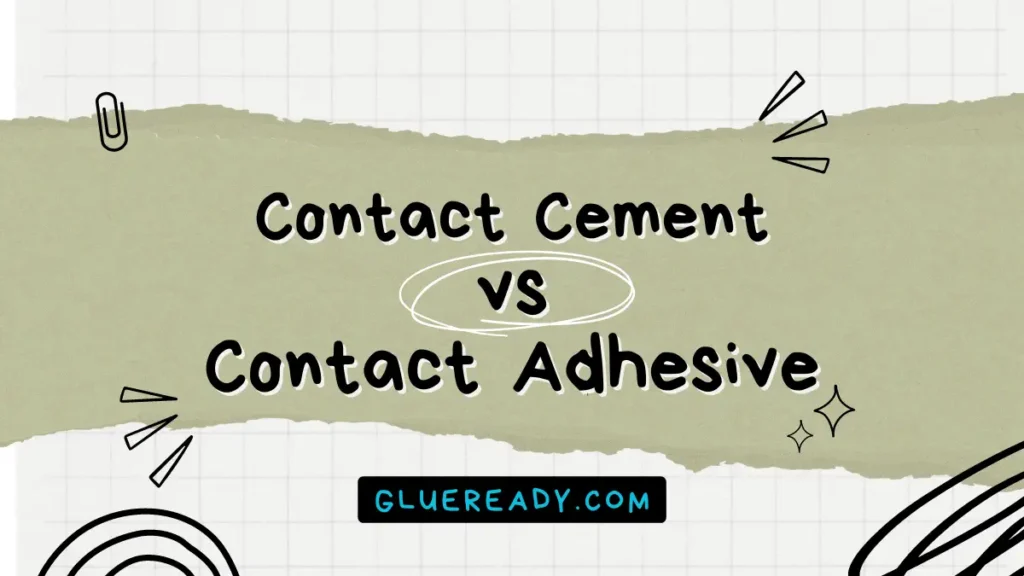B6000 vs B7000 | Any Difference?

B6000 and B7000 are both popular industrial adhesives used in various applications, including jewelry making, phone repairs, shoe repairs, and other DIY projects. While they may seem similar, these two adhesives have notable differences.
B6000 glue is composed of butyl rubber and PVA and has a slower curing time but excellent flexibility. B7000 glue is formulated of MMA and silicone and has a faster curing time but exceptional durability.
In this article, I will compare B6000 vs B7000 glues to help you make an informed decision based on your specific needs.
Read More: How Strong Is Hot Glue?
Overview of B6000 Glue
B6000 glue is a unique adhesive formulated to meet high-performance industrial requirements, making it an exceptional adhesive for any craft project. It is made of butyl rubber, PVA, and other compounds.
B6000 glue has a thick consistency and dries clear, making it a popular choice for crafts, jewelry making, and phone repairs. Typically, the cure takes between 24 and 72 hours.
B6000 glue can be used to bond various materials, including plastic, fabric, metal, glass, ceramic, rubber, tile, PVC, fiber, vinyl, nylon, electronic components, and more.
B6000 glue is easy to use and comes with a needle-point nozzle design to deliver precise application. It is also waterproof and anti-vibration.

Overview of B7000 Glue
B7000 glue is a versatile and durable adhesive that can be used for various applications. It is composed of methyl methacrylate (MMA), silicone, and other compounds.
B7000 glue has a thinner consistency than B6000 glue and dries clear, making it an ideal choice for phone repairs, jewelry making, shoe repairs, and other crafts.
B7000 glue has a relatively fast curing time, taking anywhere from 24 to 48 hours to fully cure. It can bond various materials, including metal, glass, plastic, leather, wood, fabric, paper, and more.
B7000 glue is easy to use and comes with a needle-point nozzle design to deliver precise application. It is also waterproof and self-leveling.

B6000 vs B7000 Glue Comparison Table
| Feature | B6000 | B7000 |
| Composition | Butyl rubber and PVA | MMA and silicone |
| Consistency | Thick | Thin |
| Color | Clear | Clear |
| Curing Time | 24 to 72 hours | 24 to 48 hours |
| Bonding Strength | High | High |
| Flexibility | Excellent | Good |
| Durability | Good | Excellent |
| Resistance to Heat and Chemicals | Good | Excellent |
| Suitable Materials | Metal, glass, plastic, rubber, etc. | Metal, glass, plastic, leather, wood, fabric, paper, etc. |
Differences Between B6000 Glue and B7000 Glue
While both B6000 and B7000 glues share many similarities, they have a few key differences that may influence your choice of adhesive. Here’s a quick breakdown of their comparative features:
Composition
B6000 glue is a new upgrade of B7000 glue. It is composed of a unique formula that includes butyl rubber and polyvinyl acetate (PVA).
Butyl rubber is a synthetic rubber that provides excellent adhesion and flexibility. PVA is a synthetic polymer that adds additional bonding strength and flexibility.
B7000 glue is composed of a unique formula that includes methyl methacrylate (MMA) and silicone.
MMA is a synthetic resin that provides high bonding strength and durability. Silicone is a synthetic polymer that adds additional bonding strength and flexibility.
Curing Time
B6000 glue has a relatively slow curing time, taking anywhere from 24 to 72 hours to fully cure. However, the curing time can be accelerated by applying heat or using a curing accelerator.
B7000 glue has a relatively fast curing time, taking anywhere from 24 to 48 hours to fully cure. The temperature and humidity of the environment can affect the curing time.
It is essential to note that both B6000 and B7000 glue should not be exposed to water or moisture during the curing process, as this can affect its bonding strength.
Bonding Strength
B6000 glue has a high bonding strength and can be used to bond various materials, including metal, glass, plastic, rubber etc.
This adhesive is known for its excellent flexibility and can withstand bending and twisting without cracking or breaking.

B7000 glue has a high bonding strength and can be used to bond various materials, including wood, glass, plastic, cloth, leather, and more.
The adhesive withstands impact and abrasion without cracking or breaking, making it extremely durable.
Versatility
B6000 glue is not as versatile as B7000 glue and works best on materials such as metal, glass, plastic, rubber and more. However, it may not work well on materials such as wood, cloth, leather, and paper.
B7000 glue is more versatile than B6000 glue and works well on almost any material, such as wood, glass, plastic, leather, paper, stone, nylon, film, fiber, cloth, rubber, ceramics, sponge, PVS, PP, PE, and more.
Therefore, B7000 glue is a better choice for projects that involve different types of materials.
Speed
B6000 glue has a slow speed compared to B7000 glue and takes about 8 minutes to set. This means that you have more time to adjust the position of the surfaces before the bond becomes permanent.
B7000 glue has a fast speed compared to B6000 glue and takes less than 6 minutes to set. Since the bond becomes permanent faster, you have less time to adjust its position.
Frequently Asked Questions about B6000 and B7000
How Strong Is B6000 Glue?
B6000 glue has a high bonding strength and can be used to bond various materials. Due to its excellent flexibility, this adhesive can withstand bending and twisting without cracking.
Is B7000 Glue Strong?
Yes, the B7000 glue is strong. It has excellent durability and can bond various materials with high strength. It works well on plastic, glass, cloth, leather, wood, and more.
Is E6000 The Same as B6000?
No, E6000 is not the same as B6000. E6000 is a solvent-based adhesive, while B6000 is composed of butyl rubber and PVA.
Is B7000 Glue Removable?
Yes, B7000 glue is removable. As soon as it dries, you can peel it off without damaging the surfaces.
What Is a Good Substitute for B7000 Glue?
E6000 glue is a good substitute for B7000 glue. E6000 offers similar properties and is widely used for various crafts, repairs, and DIY projects.
Know More: Detailed Analysis Between E6000 vs B7000
Final Thoughts
B6000 and B7000 are both great adhesives that can be used for various DIY projects. However, they have some notable differences.
Depending on your project and preferences, you may choose either B6000 or B7000 glue.
However, based on the information above, it seems that B7000 glue has slightly more advantages than B6000 glue in terms of performance and quality.
You should now be able to tell the differences between B6000 vs B7000 glue and how to use them effectively after reading this article.

